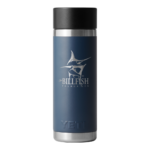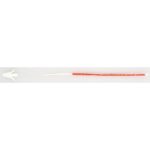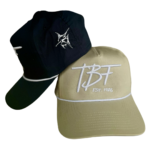Courtesy of National Marine Fisheries Service
April 20, 2016
Today National Marine Fisheries Service (NMFS) announces adjustments to the Atlantic bluefin tuna (BFT) daily retention limits that apply to vessels permitted in the Highly Migratory Species (HMS) Angling category and the HMS Charter/Headboat category (when fishing recreationally for BFT) effective April 23, 2016, through December 31, 2016, as follows:

In deciding these retention limits, NMFS considered the regulatory determination criteria regarding inseason adjustments, which include available quota, fishery performance in recent years, availability of BFT on the fishing grounds, and the effects of the adjustment on the stock and on accomplishing the objectives of the 2006 Consolidated HMS Fishery Management Plan (FMP) and amendments. These limits should provide opportunities to harvest the available U.S. BFT quota without exceeding it; prevent overharvest of the 2016 quotas; and collect a broad range of data for stock monitoring purposes.
Who is Affected?
These daily retention limits apply to vessels permitted in the recreational HMS Angling category and the HMS Charter/Headboat category while fishing recreationally. The daily retention limits are effective for all areas except for the Gulf of Mexico, which is designated as BFT spawning grounds and where NMFS does not allow targeted fishing for BFT. Regardless of the duration of a fishing trip (e.g., whether a vessel takes a two-day trip or makes two trips in one day), no more than a single day’s retention limit may be possessed, retained, or landed.
NMFS will continue to monitor the BFT fisheries closely. General category, HMS Charter/ Headboat, Harpoon, and Angling category vessel owners are required to report the catch of all BFT retained or discarded dead, within 24 hours of the landing(s) or end of each trip, by accessing hmspermits.noaa.gov. Depending on fishing effort and catch rates, additional retention limit adjustments or fishery closures may be necessary to ensure available quota is not exceeded or to enhance scientific data collection from, and fishing opportunities in, all geographic areas.
NMFS regulations at 50 CFR 635.21(a)(1) require that all BFT that are released be handled in a manner that will maximize survivability, and without removing the fish from the water. For additional information on safe handling, see the Careful Catch and Release brochure available atwww.nmfs.noaa.gov/sfa/hms/.
For additional information, go to hmspermits.noaa.gov , the official noticeor contact Science & Policy Specialist, Michael Kelly at [email protected].
Attention: NMFS announced that as of April 10, 2016 the bluefin tuna Trophy Angling Category south area is closed for large medium and giant “trophy” bluefin tuna (73” or greater) in the southern area by the National Marine Fisheries Service (NMFS) for the remainder of 2016. The southern area is the area south of 39°18’N (off Great Egg Inlet, NJ), not including the Gulf of Mexico. Any bluefin tuna caught by recreational anglers in the southern area must be released. This applies to all HMS Angling and HMS Charter/Headboat permitted vessels in the southern area. See TBF news for further information.






